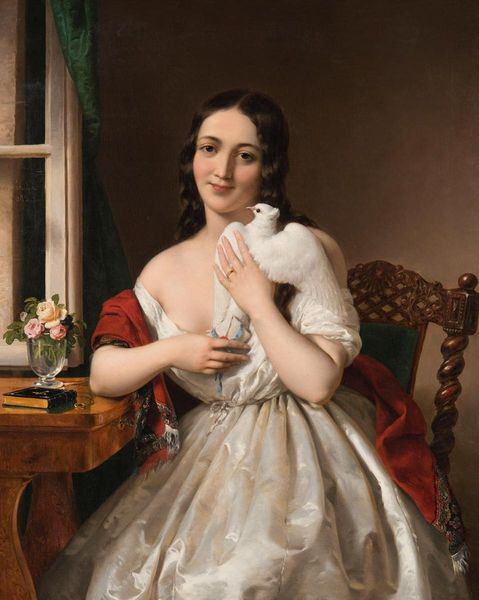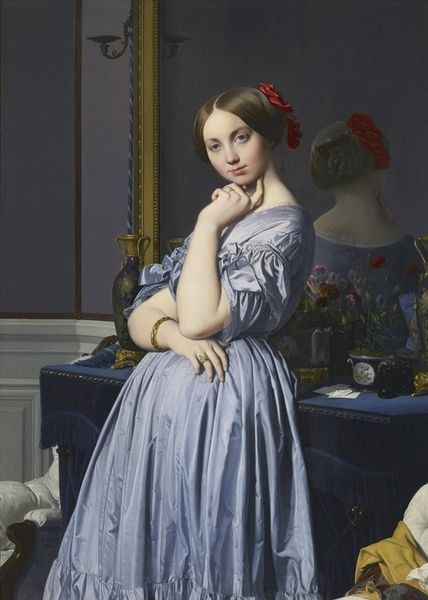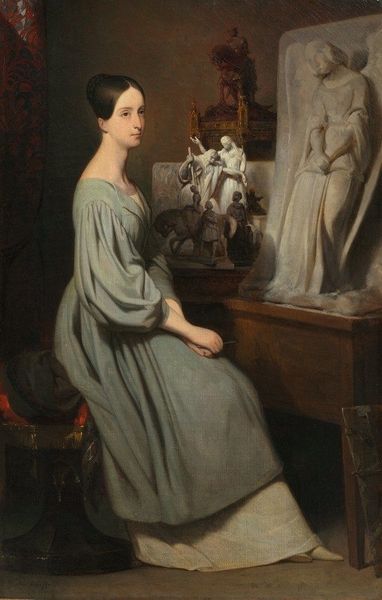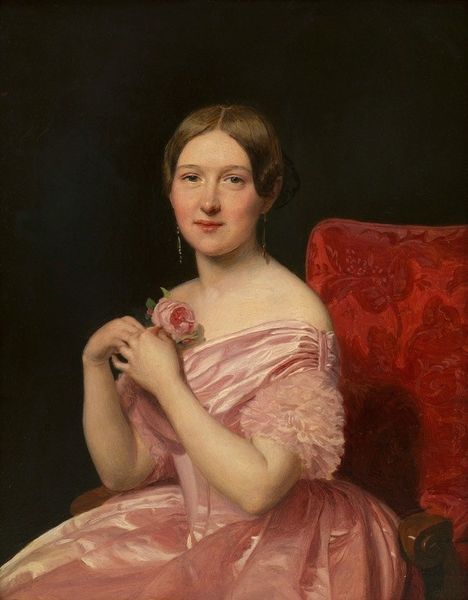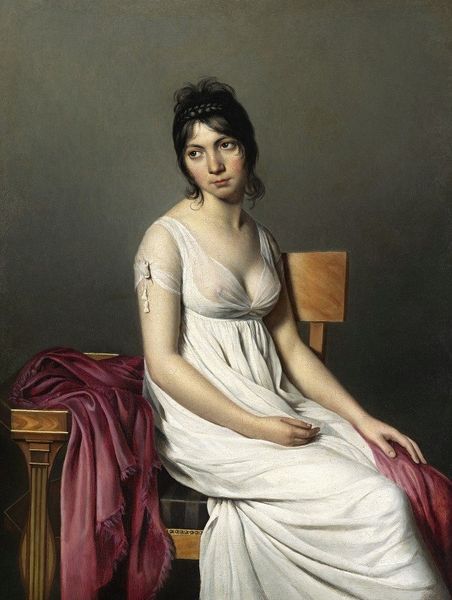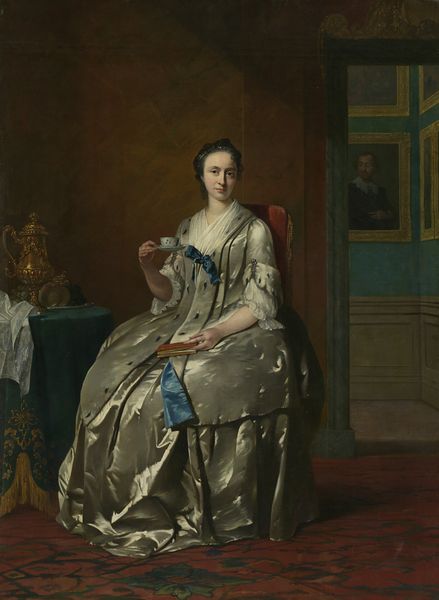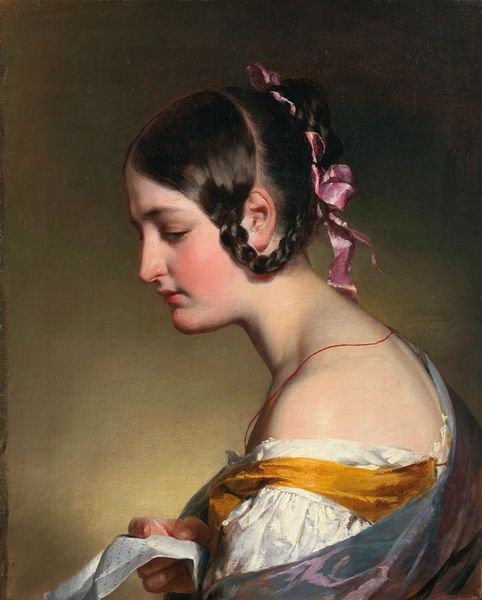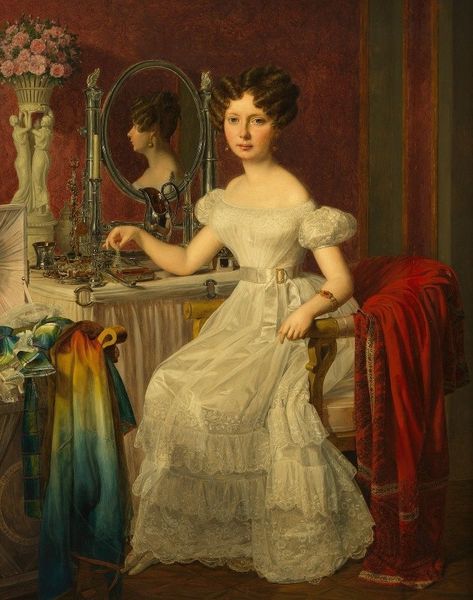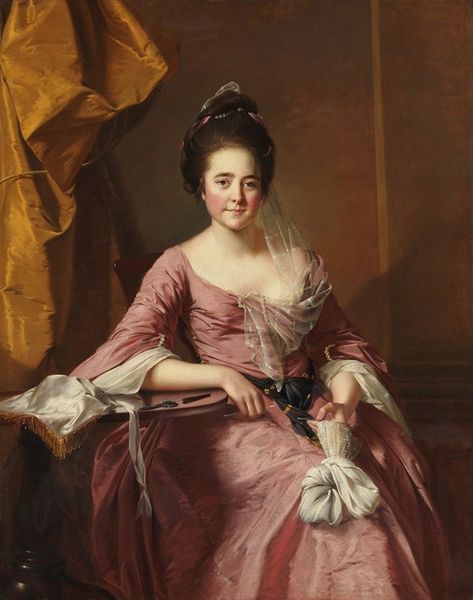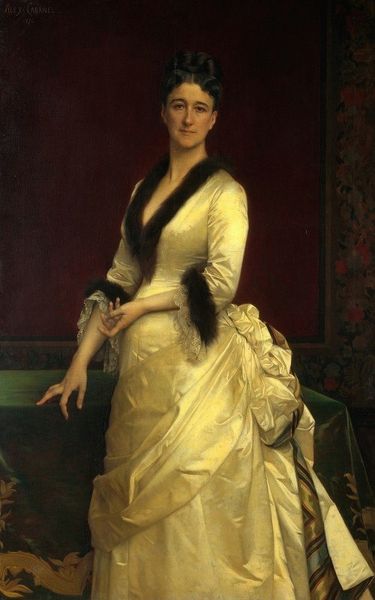
painting, oil-paint
#
portrait
#
figurative
#
painting
#
oil-paint
#
romanticism
#
genre-painting
#
academic-art
Copyright: Public Domain: Artvee
Curator: Here we have Ferdinand Georg Waldmüller's "Young Woman at Her Toilette," created around 1840 using oil paints. What are your initial impressions? Editor: It's a strangely serene and unsettling piece. The woman's coy glance is disarming, but the scene is overtly performative, almost like a stage set for the male gaze. Curator: Indeed. Waldmüller was a master of Biedermeier painting, a style known for its realism and moralizing genre scenes depicting middle-class life. Note the idealized domestic space, complete with symbols of refinement such as flowers and sculptures. Editor: The interior decor seems intended to signal status, but I'm also struck by the subtle power dynamics on display here. Consider how the subject's agency is undercut. She's caught in the act of, what, primping for her suitor or husband? Curator: It’s a genre painting, remember, which implies it reflects the accepted norms of the time. Waldmüller would’ve been conscious of creating a sense of aspiration and illustrating an attainable ideal. The woman isn’t merely primping, but perhaps managing her image within her constrained world. Editor: But who is it for? How complicit is the subject in performing these norms, and what does it mean? The gaze of a 21st century viewer confronts many troubling realities: social inequality, restrictive gender roles... This painting offers the comfortable image of bourgeois stability. Curator: You are asking an excellent set of questions that prompt us to consider the painting within its socio-political context. The red tartan draped across the vanity serves a similar purpose, perhaps referencing prosperity or trade, a visual key that reinforces the subject's comfortable existence. Editor: And what about the self-portrait in the mirror? Her doubled presence. Is this supposed to underscore the nature of the sitter's world as artificial, self-conscious? Curator: We might consider how that echoes Waldmüller’s own artistic process. The reflection draws attention to the painterly construction. It's the work of an artist attempting to reproduce what is reflected back at them through the use of illusionistic devices. Editor: These academic paintings often offer the perfect paradox, that idealized, harmonious representation of an oppressive society. Thank you, that really makes me reflect on the relationship between beauty and politics. Curator: Thank you for adding context; seeing this period represented this way encourages continued study into not just how people lived then, but how this scene reflected society itself.
Comments
No comments
Be the first to comment and join the conversation on the ultimate creative platform.
